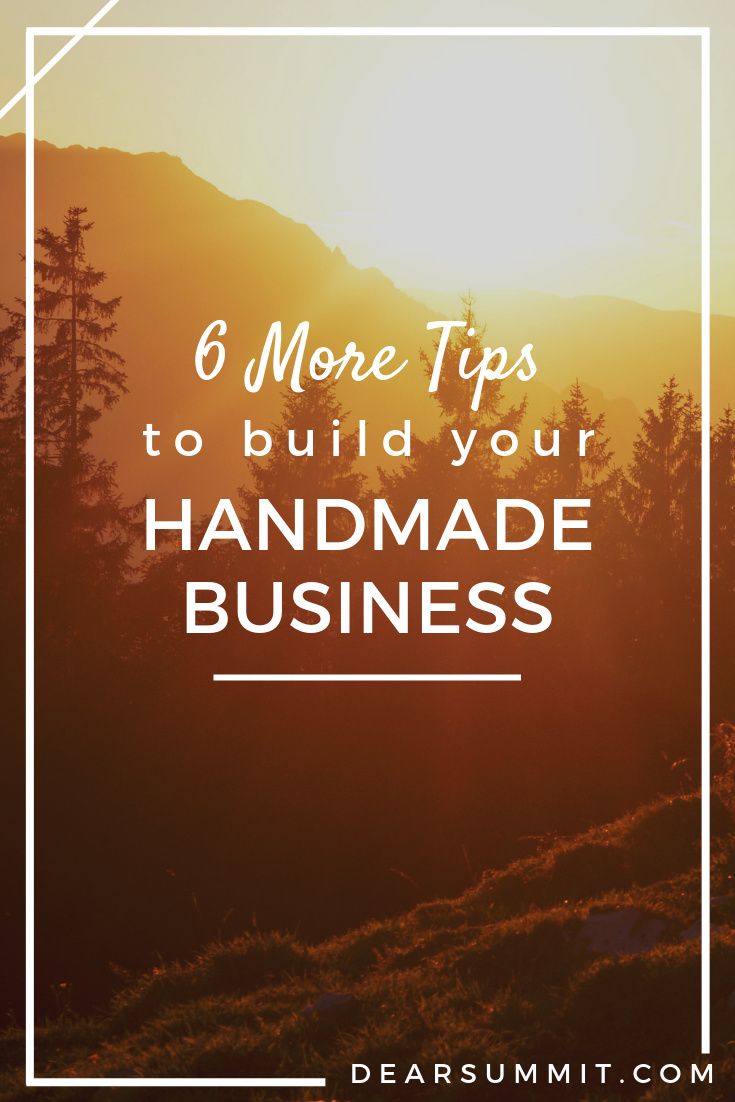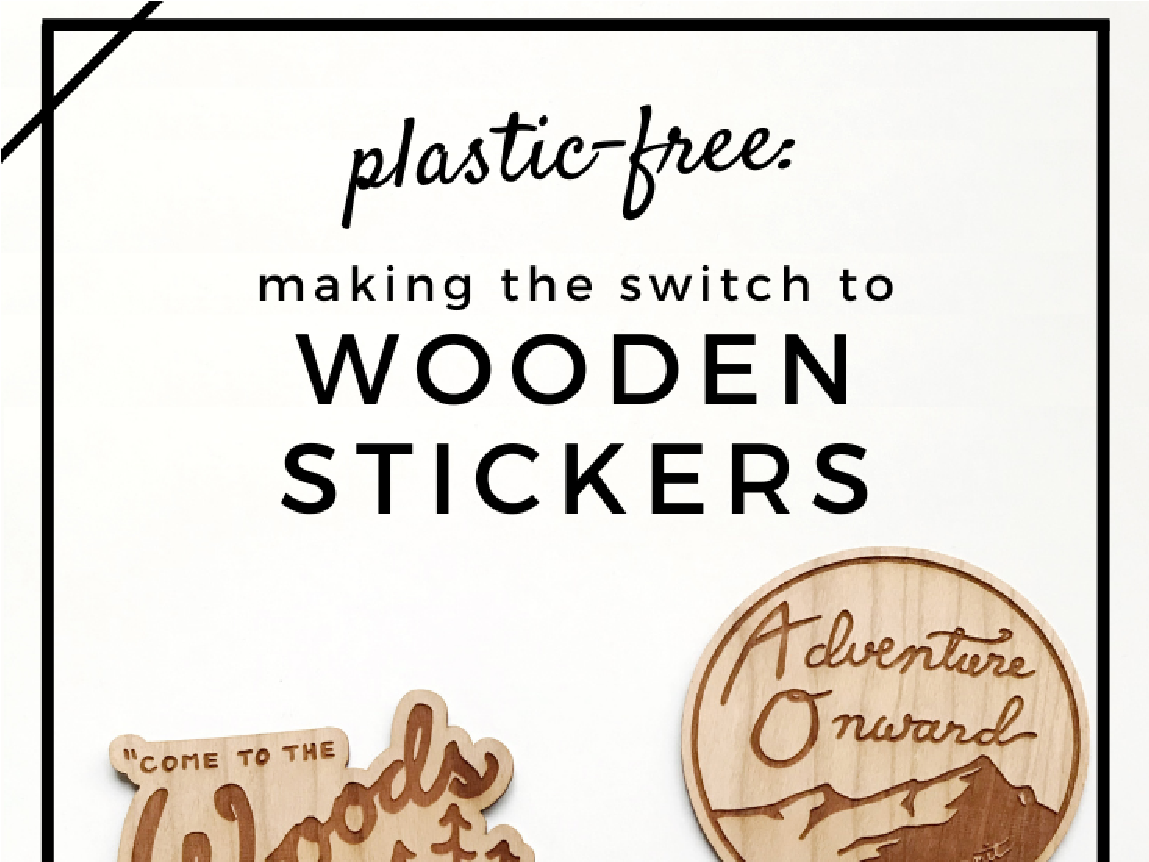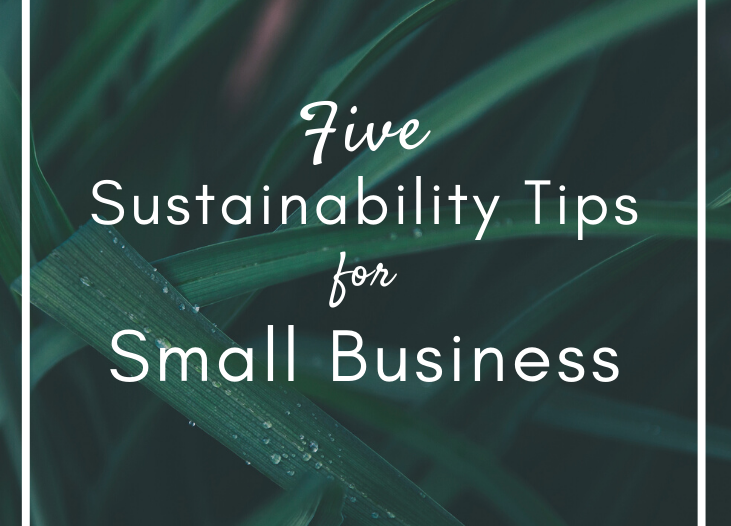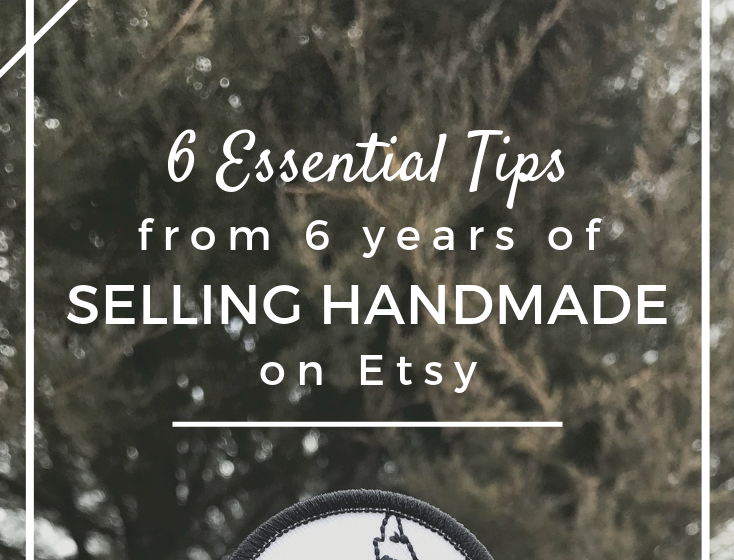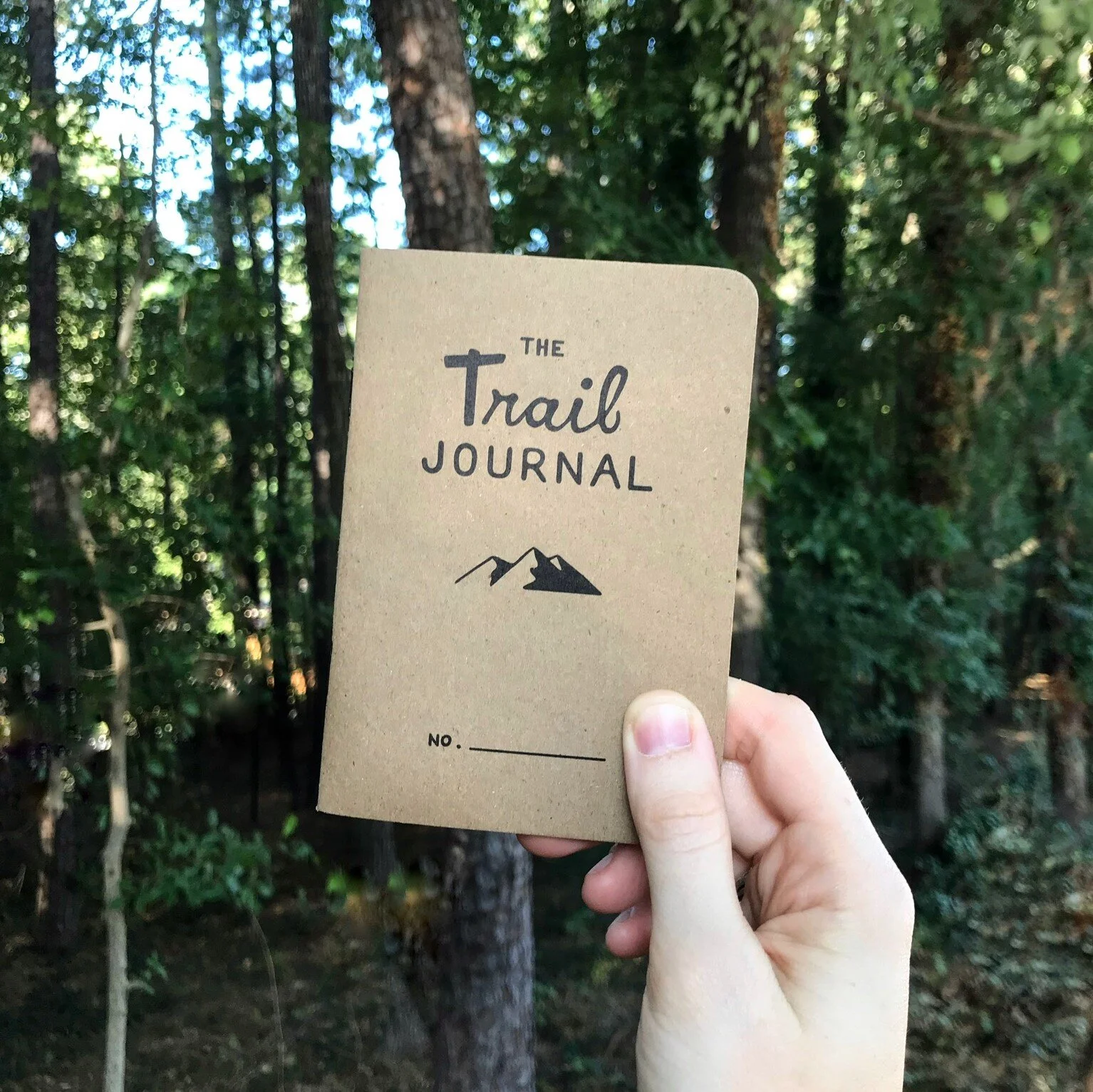So you've started your handmade business, you're making some sales and gaining some traction, but you know it could be doing better. I've previously shared six great tips for selling handmade products on Etsy (if you haven't read that one yet, go read it first and then come back and read this post afterward), but I've learned even more in the two years since I wrote that post. The following are six more tips I've learned for building your handmade business - and while I am writing from the presumption that you're selling on Etsy, these tips would easily apply to selling handmade online, in general.
Your handmade business already has a good foundation, so now lets start building it toward greater success!
One : Be authentic.
Okay, okay, I know the word "authentic" is thrown around a lot, but what I really mean is to be you and let your personality shine through your business. You're not a faceless corporation, and that's exactly why people like to buy from you - they love the idea of knowing who created that beautiful piece they just spent their money on.
This brings us to the concept of Know, Like, and Trust; that is, that people need to know, like, and trust your business before they are compelled to give you their money. And that means they need to see your face and get a feel of your personality and quirks, so they can relate to you - and come to know, like and trust you.
But what does that mean in practice? Being "authentic" means that you should infuse yourself into your business, but do it in a way that meshes with your brand. Instead of remaining strictly "professional" in your captions, emails, and product descriptions, try writing more like how you talk. In you social media presence, make sure to show your face every now and again (but, unless your business focuses on cats, please save your shots of Mr. Whiskers for your personal account).
Build trust and likeability with your audience by being yourself, but in a way that makes sense with your brand.
Two : Serve more. Sell less.
When it comes to newsletters and social media, you should serve your audience far more frequently than you ask them to buy from you. Sounds completely counter-intuitive, right? I've even known some well-known business coaches to teach that you should be selling (i.e.- "shop now at dearsummit.etsy.com!") in every. single. thing. you post or send out to your audience.
But I think this approach is dead wrong.
Let me share why: no one wants to be sold at all the time. It's annoying, exhausting, and off-putting. Your audience doesn't need a reminder every single time you show up in their social media scrolling that they should buy from your brand. Remember, your customer's real need is to know, like, and trust you before they are likely to click the "add to cart" button. And a big part of that equation is building trust.
This is why serving your audience more than you sell makes sense.
"But wait!" you say, "I make physical products, not e-books and courses, so how am I supposed to serve my audience?" Easy, you serve them by posting content that informs, inspires, and encourages your audience. For instance, I sell outdoor gear, so I serve my audience in several ways: I post beautiful photos of the outdoors, quotes about nature and journaling, tips and stories about outdoor adventures, and, specifically on Facebook, I share articles from other publications about nature and outdoor recreation. A business that sells nursery décor might serve their audience by sharing photos of gorgeously decorated nurseries, decorating tips, and things about babies in general.
An inspirational photo I shared on Instagram - example of serving instead of selling (photo by Deanna Jensen)
This type of content builds trust with your audience and shows that you're not just after their money, but that you care about what they care about, and you're a trustworthy source on the subject.
If you post two or three times as much of the serving content as you do the sales content, then by the time you ask them to buy, your fans will be far happier to give you their money!
Three : Make it legit.
Your business might live on the internet, but it's still subject to the same need for legit accounting and the same legal regulations as a traditional business. If you haven't already applied for the your business licenses and tax permits, do it now. I'm not a lawyer or accountant, so I'm not the one to teach you what is needed for your situation or location, but please go find the proper authorities on the legalities of running a business in your state and make it all legitimate.
Now that that's out of the way, let's talk about mindset. When you talk about your business, do your refer to it by name, or do your relatives ask about your "Etsy business" or do you thank your customers for buying from your "Etsy shop"? If you do, then let's change that now. It's not your "Etsy business," it's your business. They didn't buy from "my Etsy shop," they bought from Dear Summit Supply Co. As long as you keep "Etsy" in the way you reference your business, you're crediting them instead of yourself, and you're teaching people to forget about your actual business name. It's the difference between a customer saying, "I got it from someone on Etsy," and instead saying, "I got it from Dear Summit, you should check them out!"
Last thing that has made a huge difference in the “get legit” category for me is graduating from pen-and-paper accounting (so time consuming, difficult to organize, and often inaccurate!) and switching to a real accounting software. I use Quickbooks Self-Employed and it is SO easy. You can sync it with your accounts so it will seamlessly import all your sales and expenses, so you always know when you’re making a profit, and when your finances need some work. It also helps you with quarterly and annual taxes, and takes away a ton of that headache! I’m still kicking myself because I waited so long before I started using Quickbooks. (Sign up now with my referral link and get half off your first six months!)
Four : Label and package your products like a pro.
Building on what I wrote about the importance of your photos in my previous post, the labeling and packaging of your products is absolutely vital. Make sure your mark or business name appears on each of your pieces in some way, or that you’re giving your customers a fun way to remember where it came from (some kind of “swag” like a sticker with your logo on it). That way, when they give it as a gift, or want to order more down the road, they’ll know exactly where it came from. Again, this is the difference between, “I got it on Etsy,” and “It’s from [your stellar biz]!” Some products are trickier to package and label than others, but do some research and brainstorming, and even consider hiring a designer to create these pieces for you.
Think about your product from the customer’s perspective: what do you want them to experience as they open their shipping envelope? What kind of impression will your packaging make? Do you need to include any extra information, such as care instructions?
Five : Quit going to the post office.
Seriously, there is no need to wait in line and pay retail prices at your local post office to ship out your orders. Etsy has two built-in options for buying shipping labels for your orders, and whichever one you choose, you’ll save money compared to the prices at the post office counter (8.5% less, I believe). Better yet, you can save a ton of time by printing sticky shipping labels instead of writing every address by hand (and you’ll eliminate that margin for error, too). You just need a basic digital scale, like this one, and a printer, then simply drop off your packages in any USPS mailbox (or schedule a pickup at your home). If you like the added security, you can drop your labeled packages off at the counter and have them scan them in so you have proof that you’ve handed them off, but you don’t have to. I currently use a black and white inkjet printer and 100% recycled labels from EcoEnclose, but I’m planning to upgrade to the DYMO LabelWriter, which will streamline the shipping process even further and eliminate the need to buy ink cartridges.
Six : Build a real website.
Etsy is an amazing tool. It’s so easy to set up and the overhead is low, but it should not be the main “home” for your business forever. Etsy is like an incubator to help you get your handmade business started, and it has the huge benefit of hosting its own massive customer base - if your shop is fully optimized to show up in searches, then Etsy will bring the customers to you, minimizing that work on your end. But that’s a double-edged sword; when you bring your customers to your Etsy shop, you’re also bringing them to the 1.8 million other sellers on Etsy vying for their money. We’ve also discussed the danger of being dismissed as just another “Etsy shop.”
So get your own website. I use Squarespace, but Wordpress and Shopify are also great options. Set your products up to sell, and build a real home for your business, while continuing to use Etsy for the easy, organic traffic.
This might sound super daunting and scary to set up and sell on your own website. I know it was for me for years. I was worried that setting up my products to sell and getting all the shipping settings and everything configured would be a major headache. But I'm happy to report, it was a heck of a lot easier than I expected to set up my web store here on dearsummit.com! It probably helped to have done all the work of writing product descriptions and figuring out the logistics on etsy for years, so it wasn't too much trouble to translate it all into Squarespace's platform.
But if getting it all set up is too much for you right now, that's okay - at the very least, buy a domain name (i.e. - yourbusinessname.com), and set it up to forward to your etsy shop for now, until you can set it up for real. (A quick google search will turn up the resources you need to learn how to do this forwarding.) Then everyone will already be used to using your website’s address to find your shop, and they’ll head to the right place automatically once you are ready to open your independent site.
I use IWantMyName to host my domain names and I've had a great experience with them. Their rates are affordable and their customer service team is quick and helpful. Register your domains with them here.
One of my designs on a vinyl sticker - available in my shop here.
Bonus Tip! Read up.
Do your research and read up on business and creativity topics relative to your business, and while blog posts and online resources are great, I'm talking about books. Free resources (like this very blog post) can only get you so far, and if you want your business to grow, you'll need to invest a little bit in some heftier stuff. I’ve read lots of books for entrepreneurs and makers, and by far the most helpful one for me has been Christy Wright’s Business Boutique. It’s aimed at women, and I’ll admit I was skeptical of it at first, but after reading it, I’m thoroughly impressed with the Christy’s clear and straightforward writing. She takes you through every step of developing and structuring your business to set you up for amazing success, without ever feeling pedantic or condescending. Even with eight years of experience under my belt, I’ve learned a ton from Christy's book, and I bet you will too!
This post contains affiliate links. That means that if you purchase something through my link, I'll receive a small commission, at no extra cost to you. Your support helps me keep the Dear Summit Blog going!
Whew! I know that was a lot of information, but I hope you find some of it helpful in propelling your handmade business to the next level. Got any questions? Ask them in the comments!

